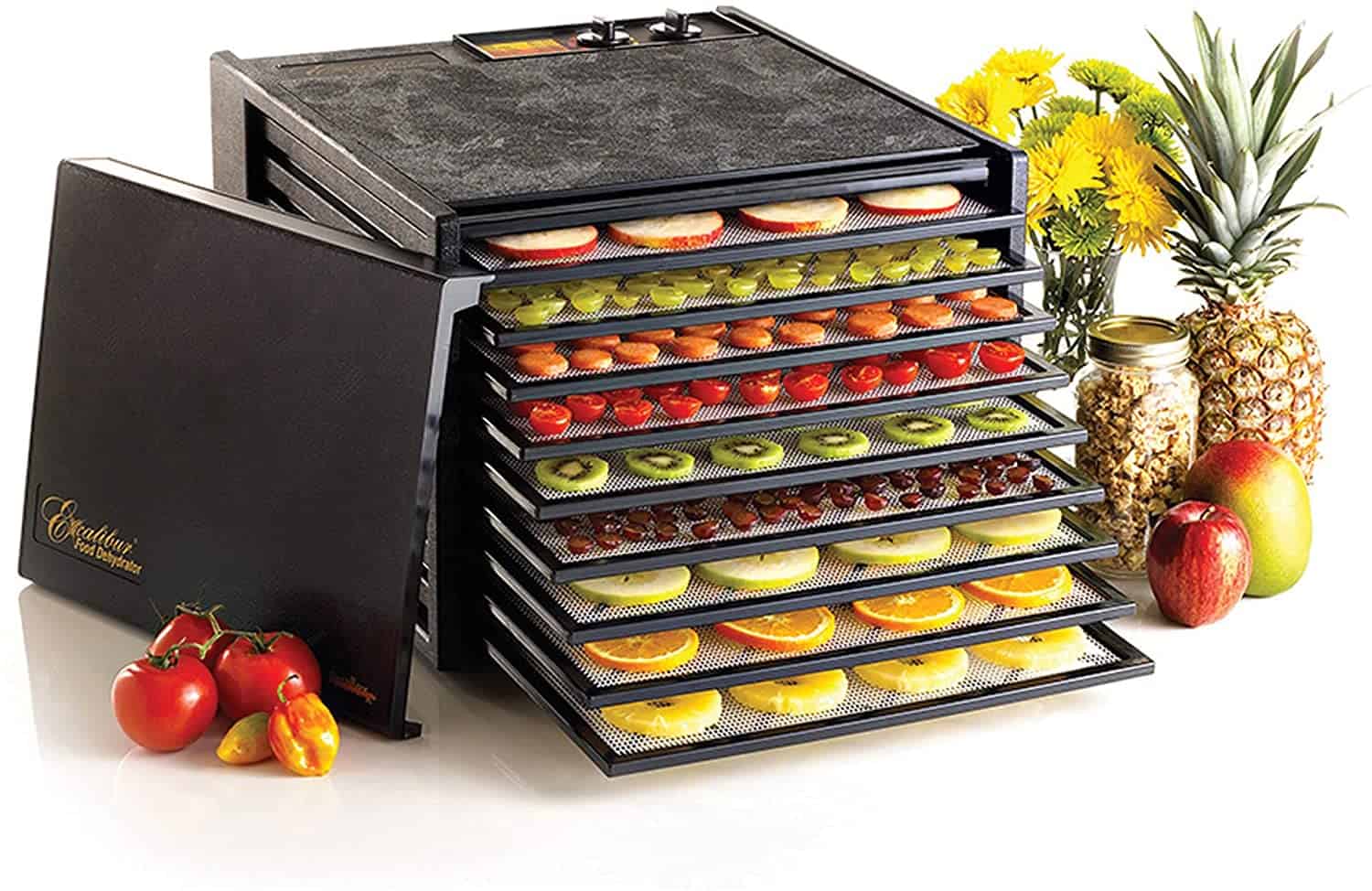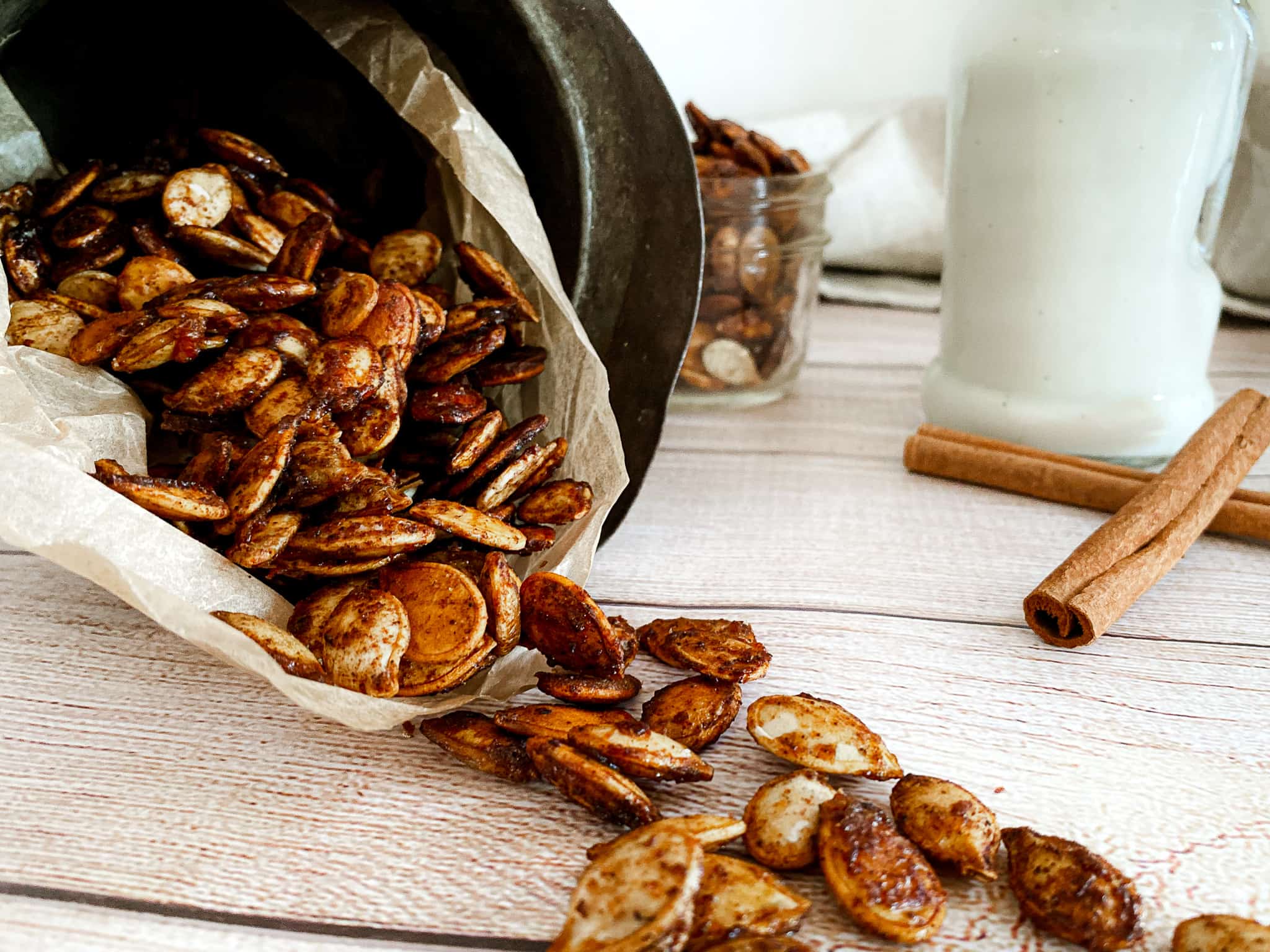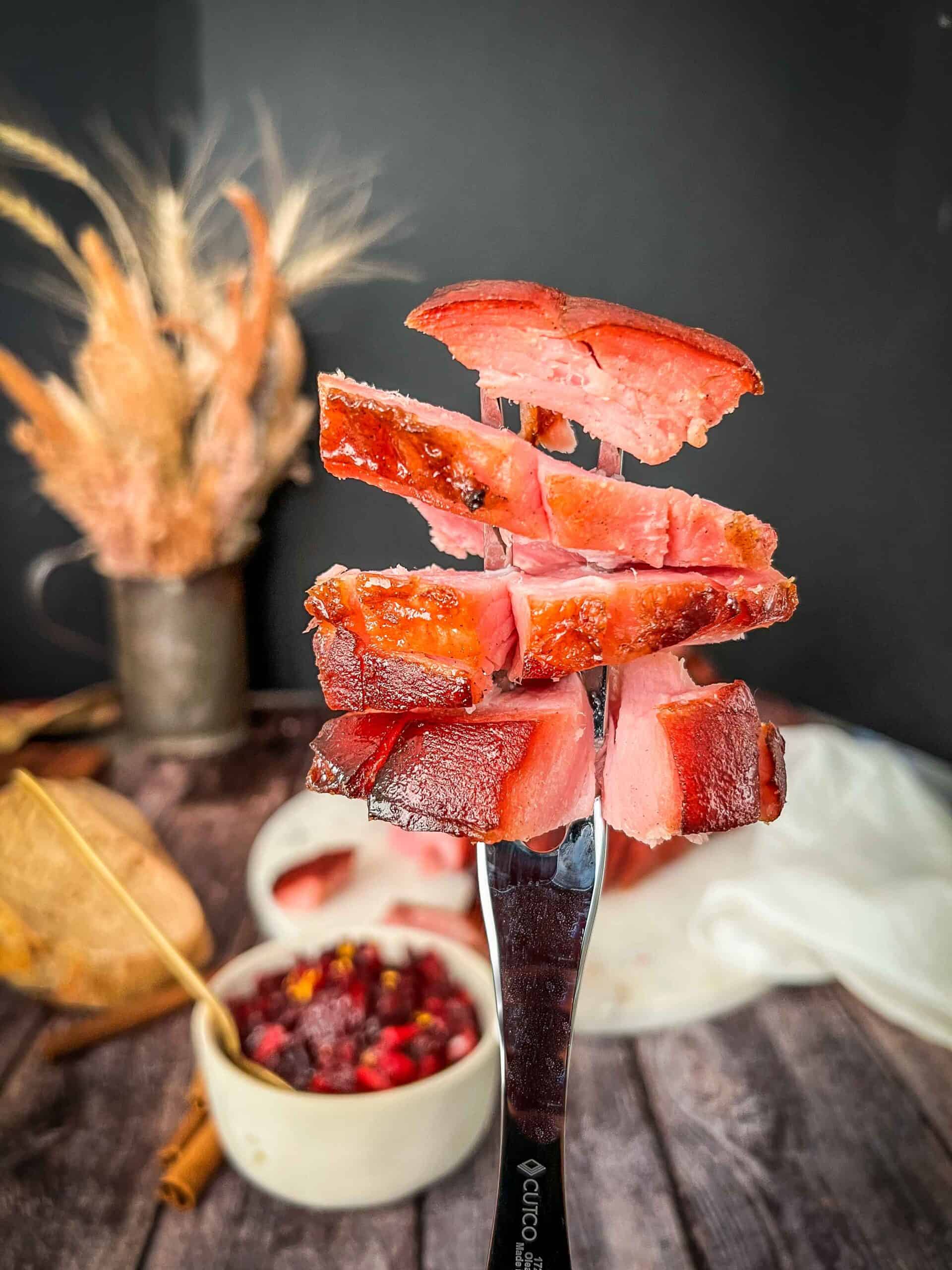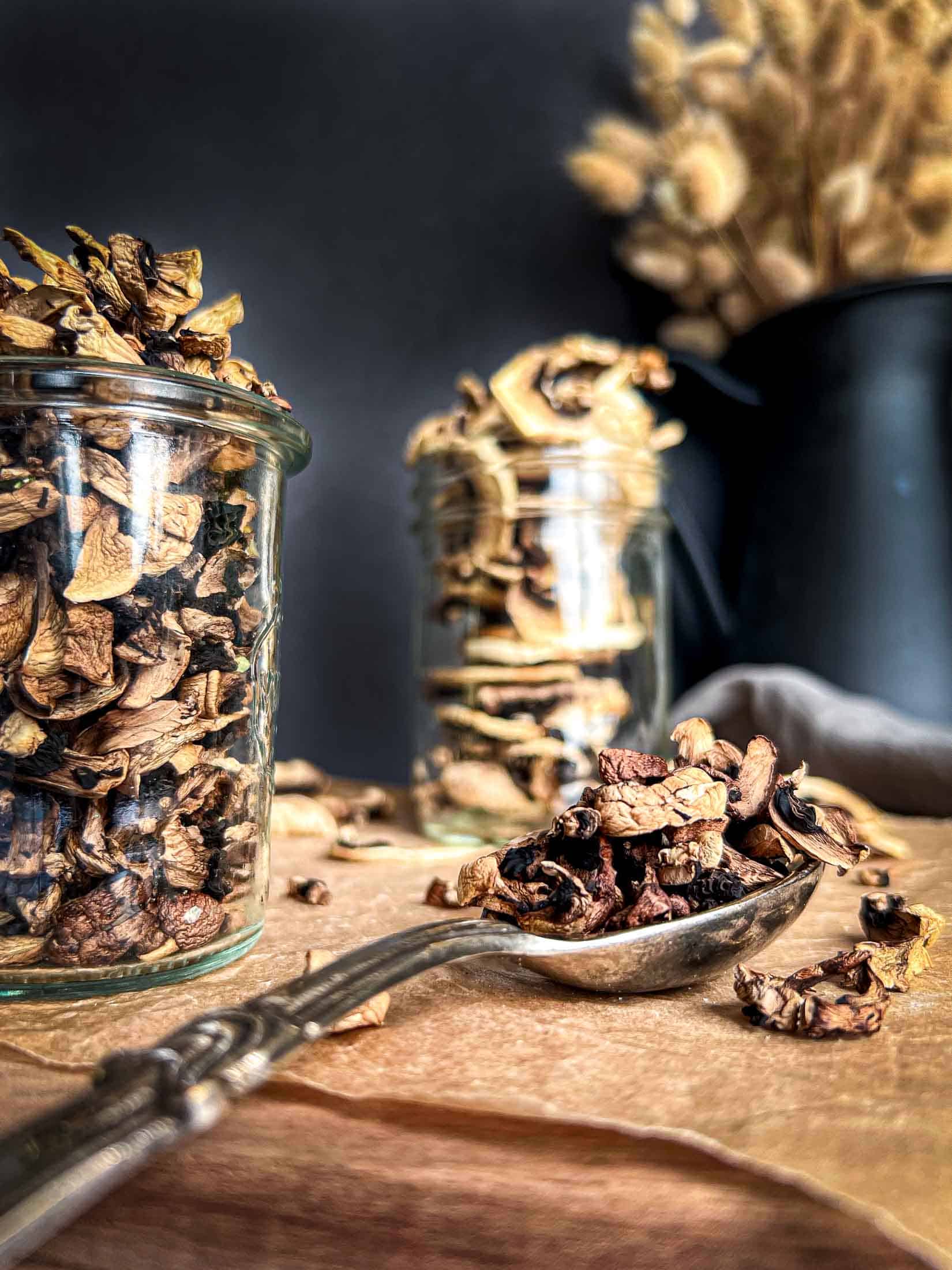How To Dehydrate Celery | Drying Celery Leaves and Stalks
Read on to find out exactly how to dehydrate celery and learn preserve this kitchen staple when your harvest is abundant! Dehydrating celery stalks and leaves is simple and adds flavor and texture to soups, stews, and sauces. Drying celery helps to save freezer space for a long term storage solution that is simple to grab and use any time of the year. No dehydrator? No problem! Check out the instructions for using the oven and air fryer to dehydrate celery.
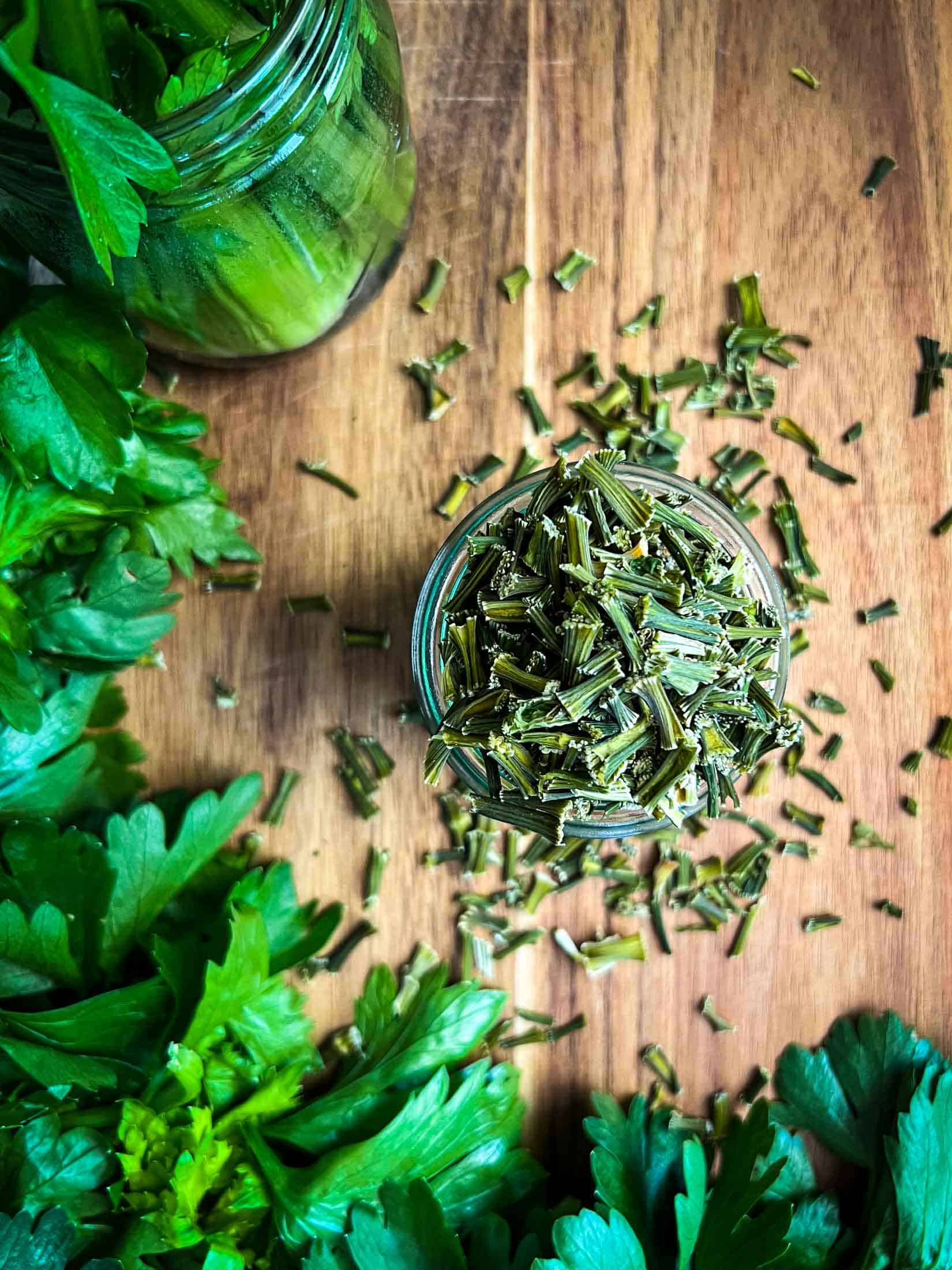
Celery is a staple in many kitchens, known for its crunchy texture and mild, refreshing taste. Harvesting celery is relatively simple, as you can either pull the entire plant out of the ground or simply cut off the outer stalks as you need them. The leaves of the celery plant are also edible and have a slightly stronger flavor than the stalks.
Looking to grow a bumper crop of celery? Check out this Celery Companion Planting Guide – What & What NOT to Plant
All About Celery
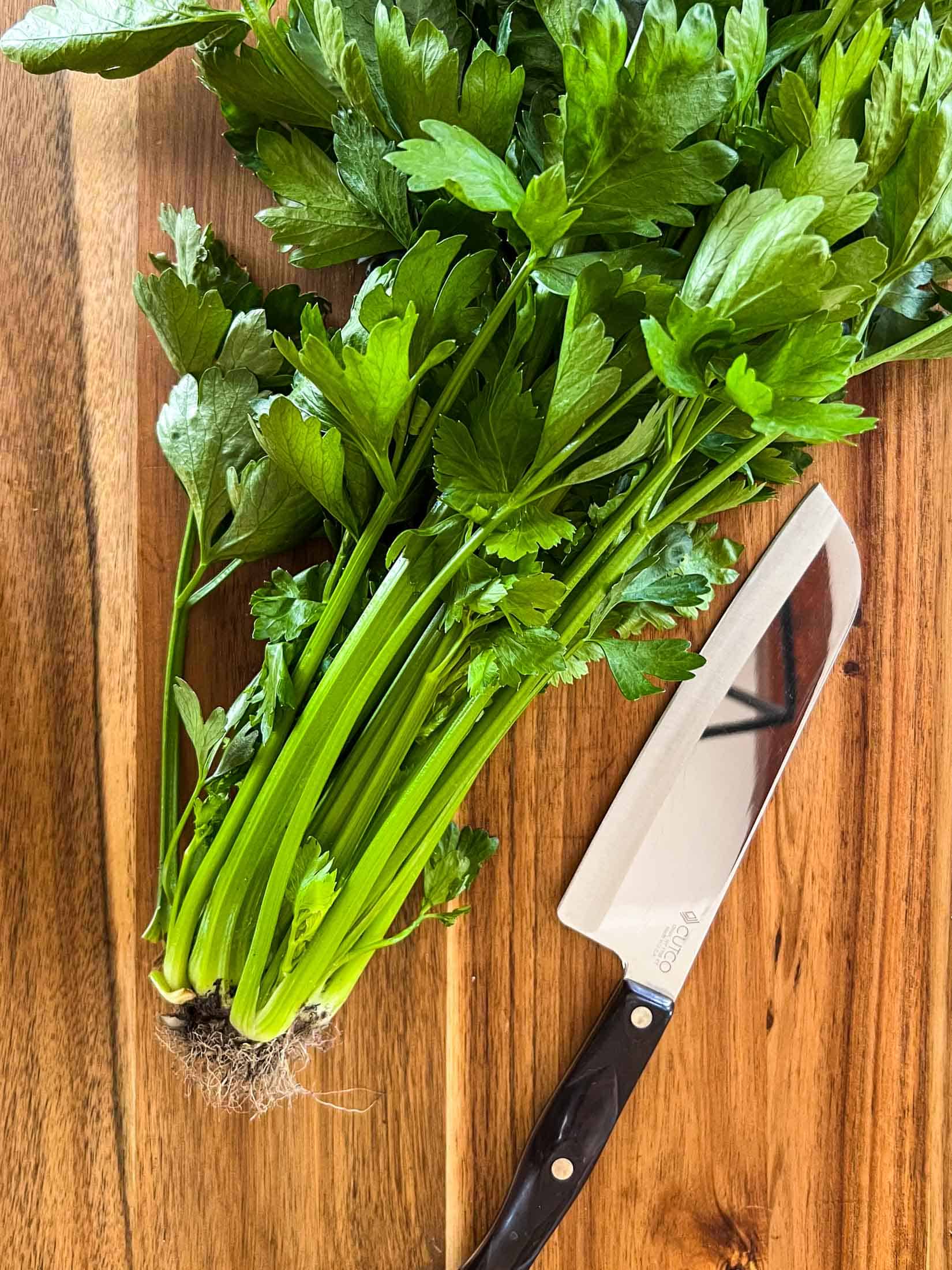
Celery can be grown anywhere from zone 2-10 and likes a mix of sun and shade throughout the day. It thrives in soil with a PH of 6-7.5 and requires a great deal of growing time!
Check out my growing guides for March, April and May to plant your seedlings, and to determine the best time to start your celery! For me, in my cold zone 3 garden, late March was the right time to start!
To give your celery a nutrient boost and to ensure the PH is at optimum levels, consider amending your soil with garden lime. The calcium deposited by the lime will also help your home grown celery to thrive. Celery’s flavour can also be enhanced by planting companion plants nearby!!
Why Dehydrate Celery?
Dehydrating celery shrinks it down to a manageable size, making it shelf stable and long lasting (up to a year without color and flavor deteriorating.) Drying celery instead of freezing it frees up valuable freezer space. Canning can be messy, time consuming, and takes up a lot of jars and pantry space – if you are feeling brave, try this quick pickled celery recipe. This dried celery recipe is easy to throw in soups and sauces, powder, and incorporate in different recipes.
Celery leaves can be dehydrated with the stalks or used separate as a herb. Add dried celery flake to sea salt for the perfect celery salt recipe.

Tips + Tricks for Dehydrating Celery
- Choose fresh celery stalks- avoid any soft and blemished pieces.
- Check the celery halfway through dehydrating to judge how much more time it will need and to move around any pieces that may be stuck together.
- Prop the door of your oven open with a dish towel (at your own risk) or cooking utensil to make sure that steam is able to escape.
- Cut pieces consistently to ensure that they dehydrate at the same rate.
- Test for dryness by conditioning the celery in a glass jar- see exact instructions below.
Blanching Celery
Blanching celery before freezing or dehydrating it can help preserve its texture, color, and flavor. Blanching involves briefly boiling the celery in water and then immediately cooling it in an ice bath. This process stops enzyme activity, which can cause the celery to become mushy and lose its nutrients over time. Blanching also helps remove any dirt, bacteria, or insects that may be on the celery.
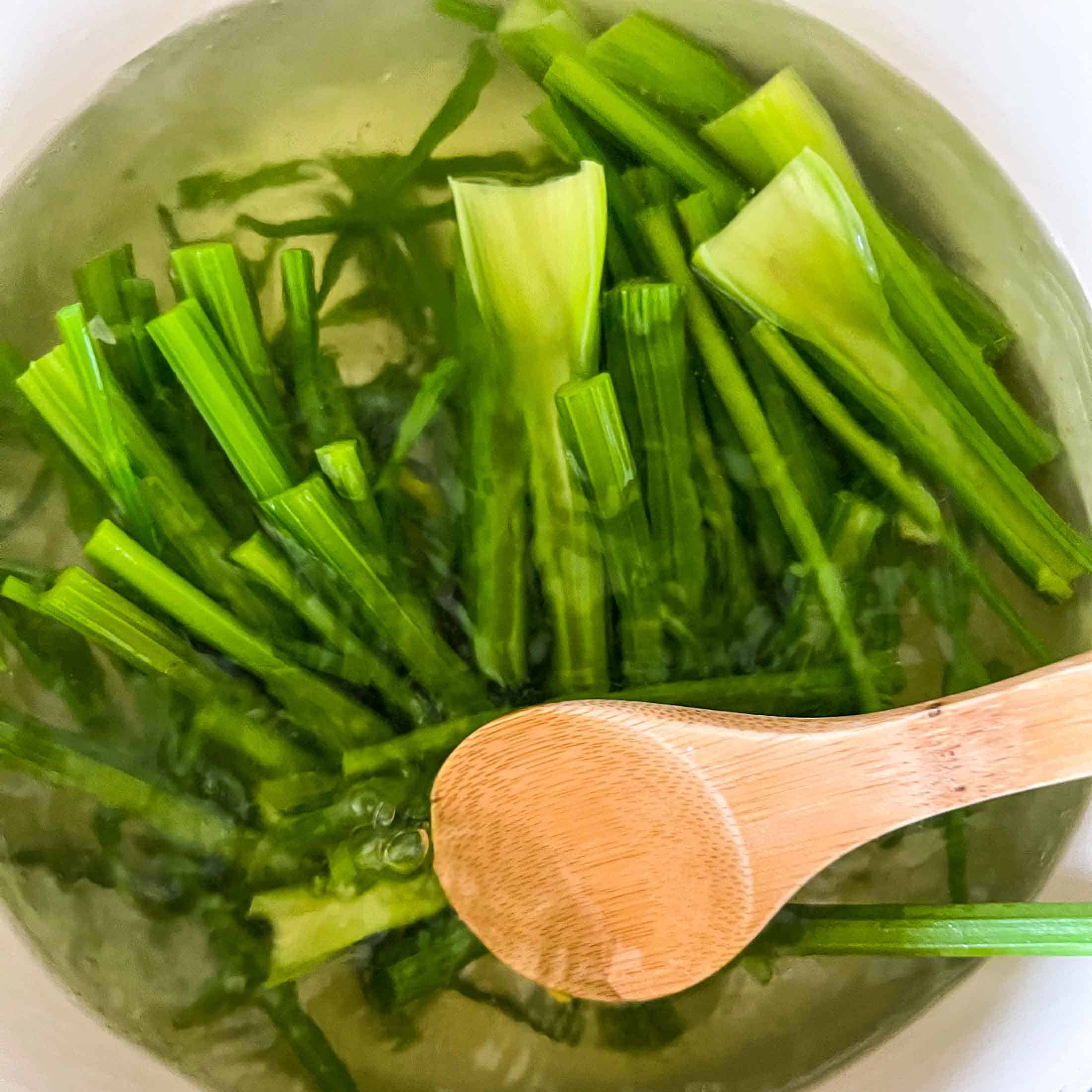
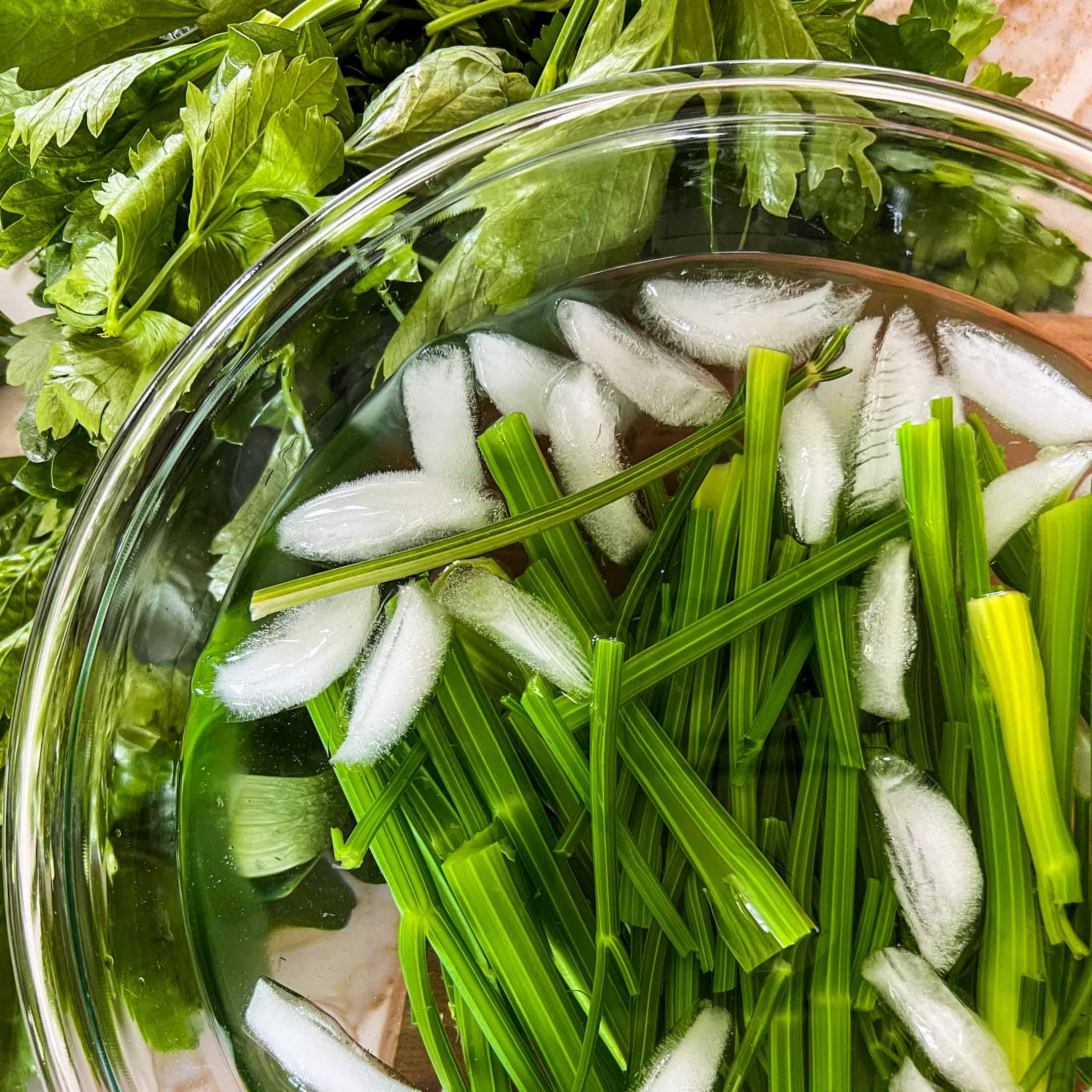
To blanch celery, first, wash and trim the stalks, then drop them into a pot of boiling water for 3 minutes. Pro tip: leave your celery as long as you can while having it still fit in your pot and cut it after it has been blanched, it takes much less force and is easier to transfer to and from the pot/ice bath. Afterward, transfer them to an ice bath for 3 minutes, then drain well and pat dry with a clean towel. Blanching times may vary depending on the size and thickness of the celery stalks.
Exactly How to Dehydrate Celery
There are three popular ways to dry celery, including in drying celery in a dehydrator and drying celery in an oven, and drying celery in an air fryer. My preferred method to dry celery is to use the dehydrator.
Dehydrating Celery in a Dehydrator
Step 1. Trim + Rinse + Blanch.
Fill a large stock pot with water and turn it up to high heat so that it comes to a rolling boil. Separate the head of celery into individual stalks. Trim off the tops and bottoms of the stalks. Rinse in warm water (optional step, especially if you celery is garden fresh).
At this point you may choose to separate the celery leaves out or leave them on the stalks. If you plan to dehydrate the celery leaves for dehydrated celery flakes or to use independently from the stalks, separate them and skip the blanching.
Place the stalks of celery into the boiling water and set a 3 minute timer. Grab a large bowl and fill it with ice water. After the three minutes have passed, transfer the celery stalks to an ice bath and leave for 2-3 minutes.
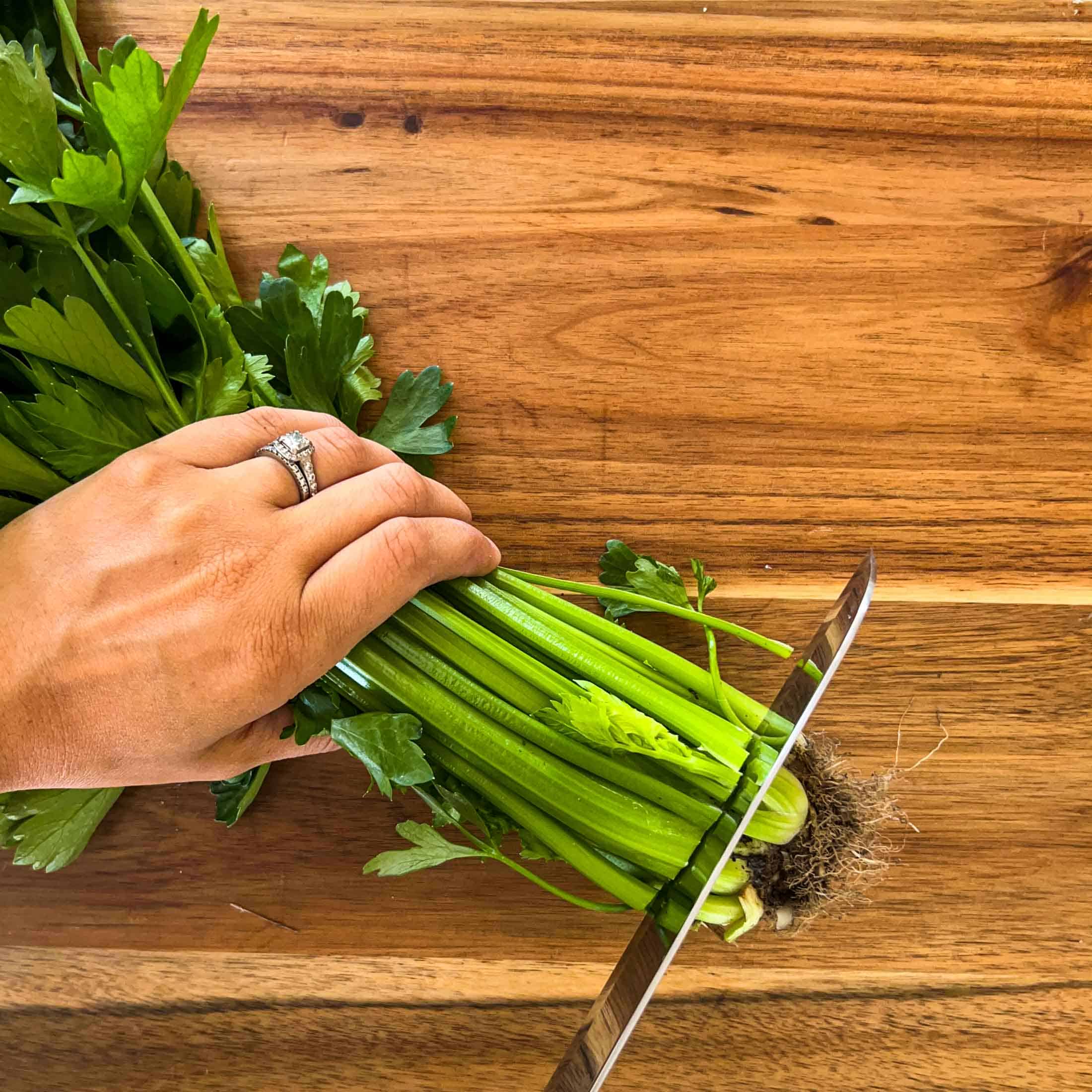
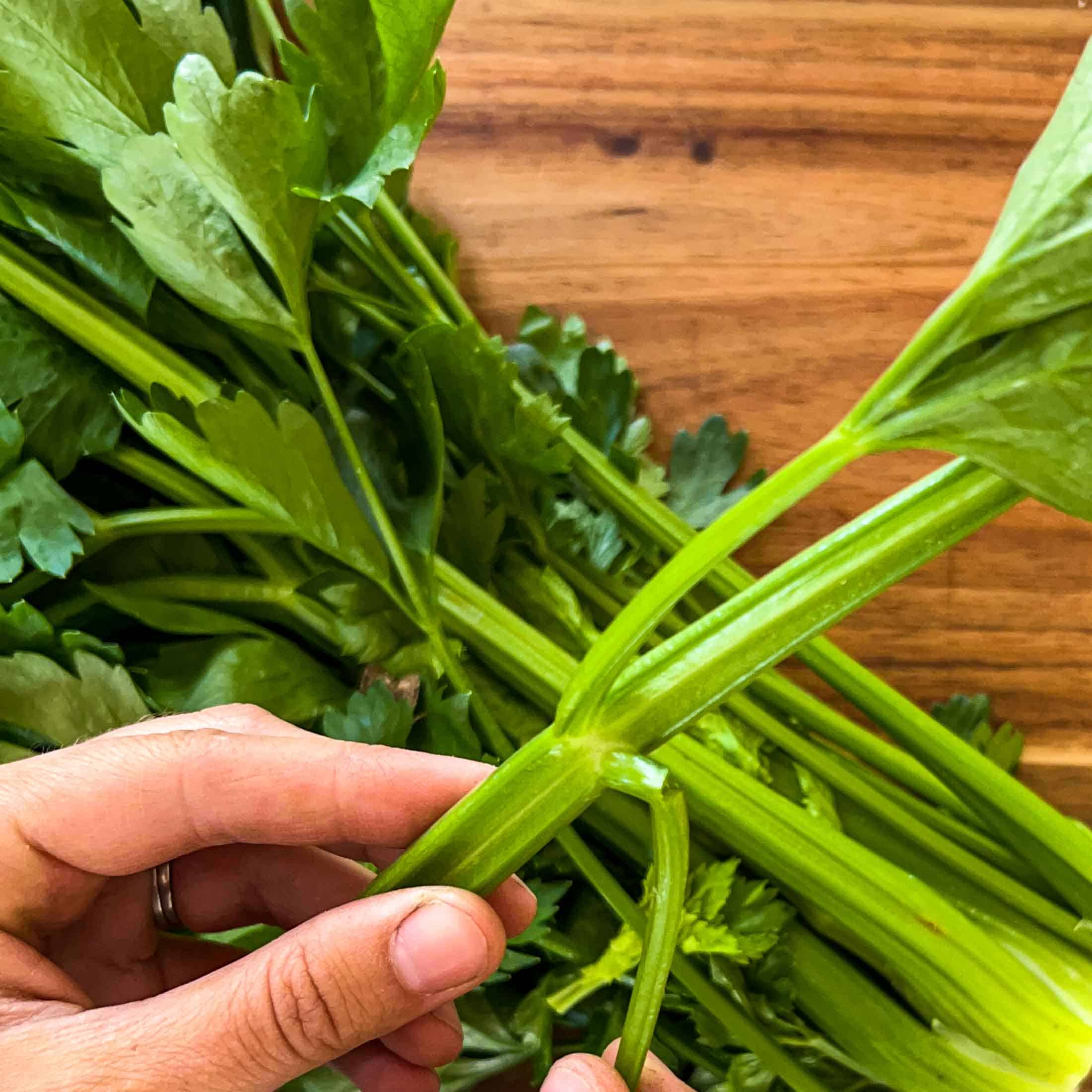



Step 2. Chop + Arrange. Chop the celery into 1/2 inch pieces. I use the large circular chop blade on my food processor to speed up the job. It is important that the celery is cut consistently to ensure that it all dehydrates at the same rate. Arrange the celery leaves and celery stalks in a single layer on your dehydrator tray.
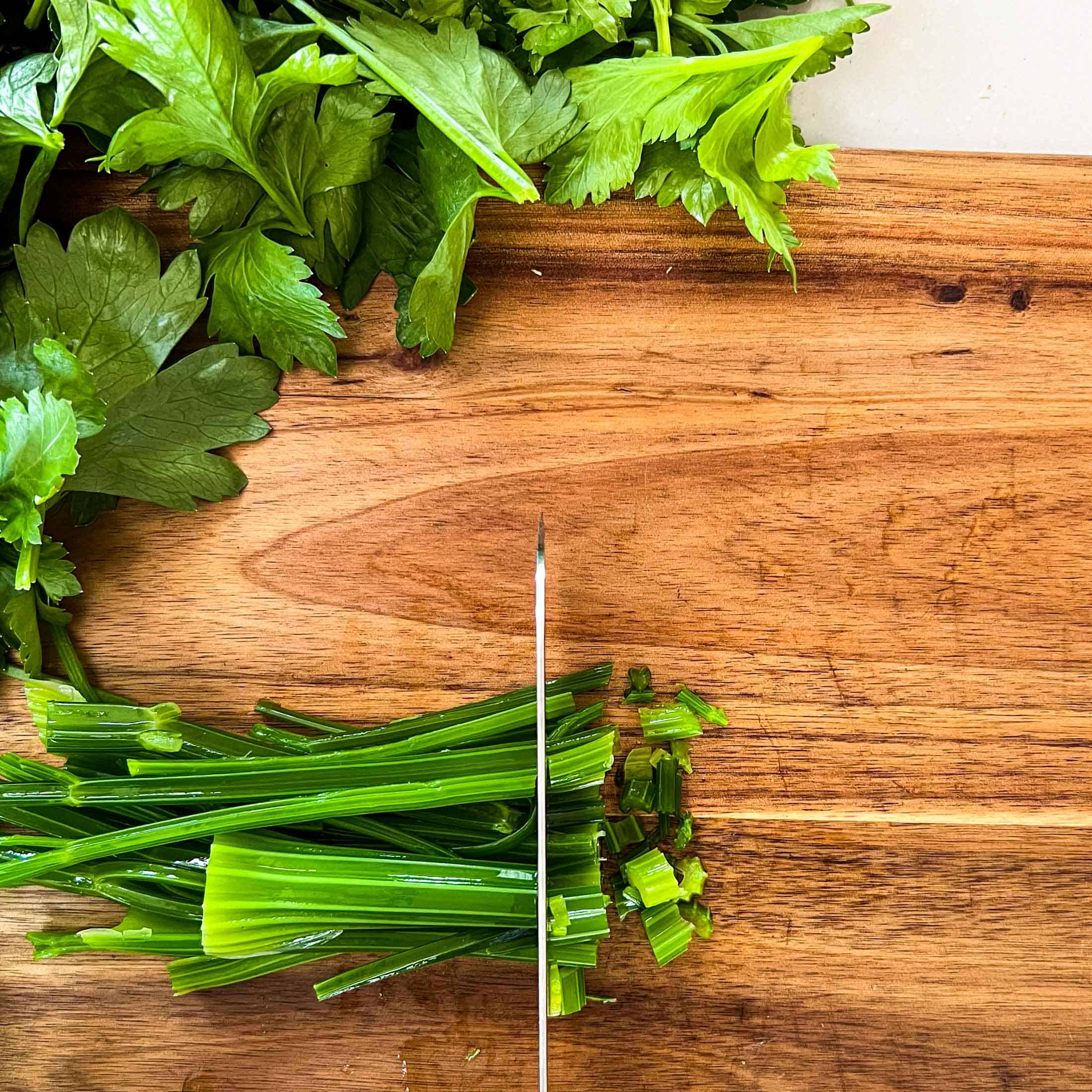
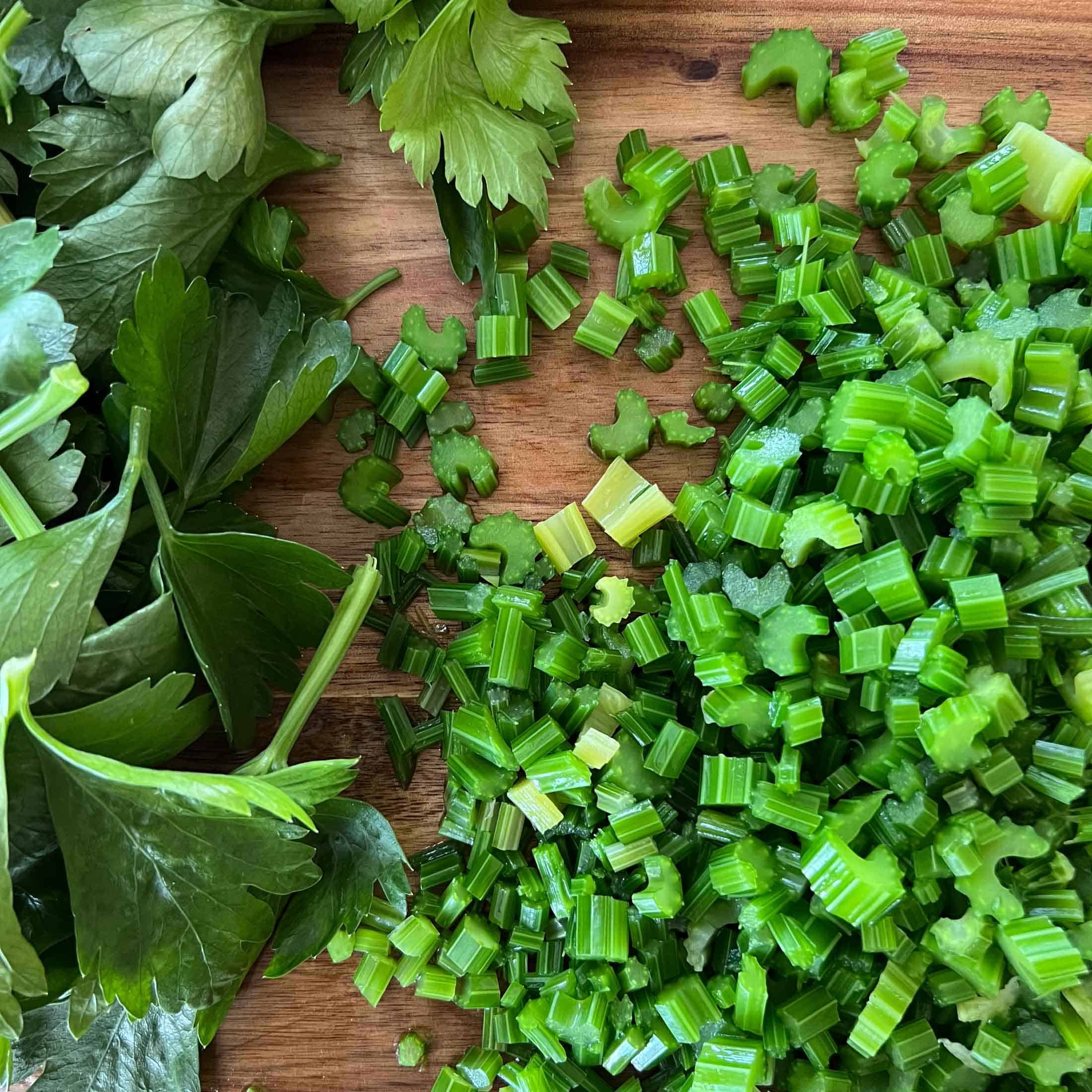

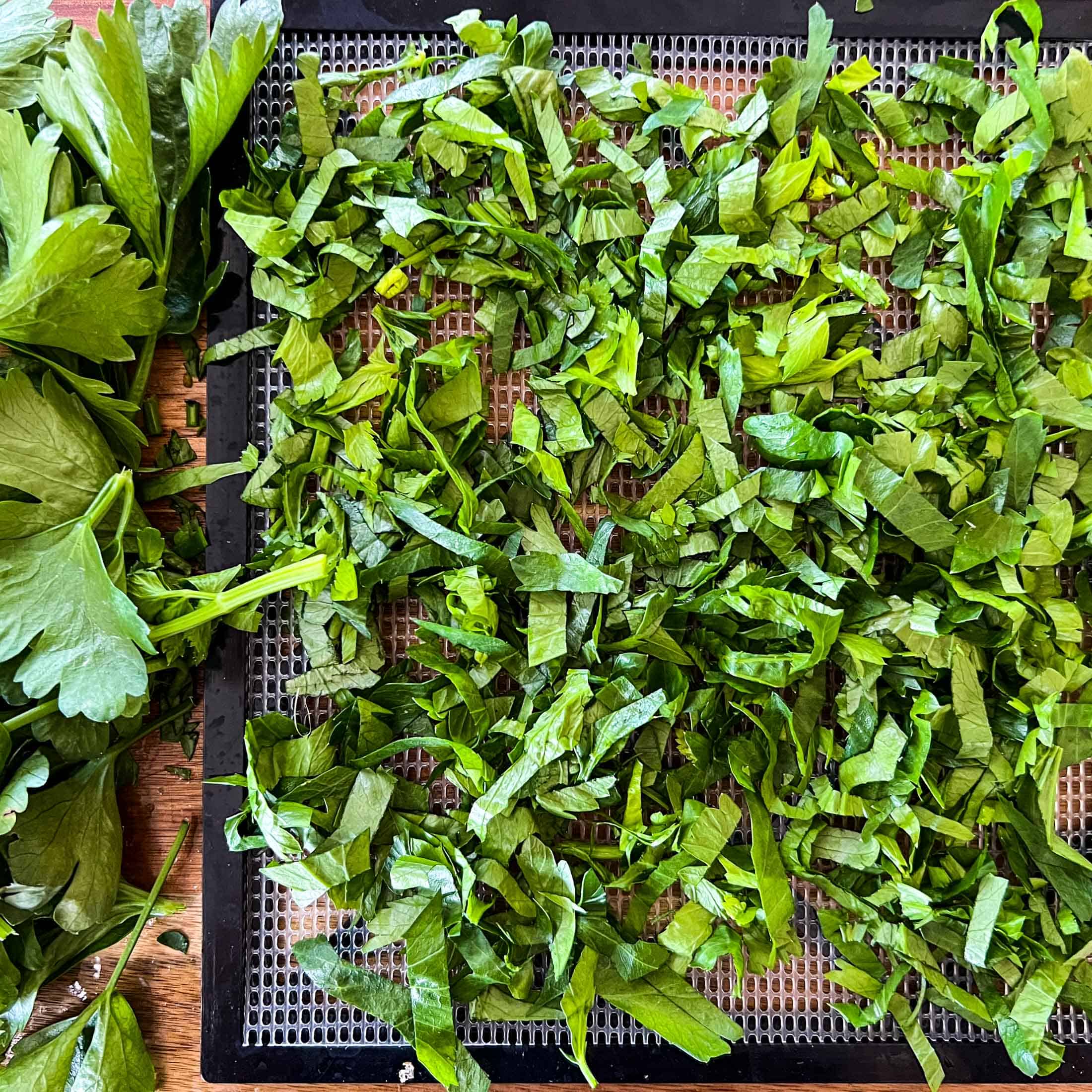
Step 3. Dehydrate + Test for Dryness. Dehydrate celery stalks/leaves for 6-8 hours at 125°F. When done, celery should be very hard and brittle. Dried celery leaves should crumble and crush easily. Cut into a few pieces to make sure that there is no moisture left in the middle of the celery pieces. At this point you should condition the celery (test for dryness) over 5 days. Place a handful of celery in an airtight container. Turn once a day for 5 days. After 5 days if you notice moisture, or mold, discard the celery. Check out this full guide to conditioning dehydrated fruits and vegetables for more information.


Step 4. Store + Use. Store dehydrated celery in an airtight container (I love mason jars). As always, dehydrated goods should be stored in a dark, cool place for best results. You may choose to throw in an oxygen absorber at this point to reduce oxygen in the jar and extend the shelf life of your dehydrated celery. This is not required but will help keep the celery fresh for longer. Celery leaves can be crushed into celery flakes or pulverized to make celery powder.
Dehydrating Celery in an Oven
Step 1. Trim + Rinse + Blanch.
Fill a large stock pot with water and turn it up to high heat so that it comes to a rolling boil. Separate the head of celery into individual stalks. Trim off the tops and bottoms of the stalks. Rinse in warm water (optional step, especially if you celery is garden fresh).
At this point you may choose to separate the celery leaves out or leave them on the stalks. If you plan to dehydrate the celery leaves for dehydrated celery flakes or to use independently from the stalks, separate them and skip the blanching.
Place the stalks of celery into the boiling water and set a 3 minute timer. Grab a large bowl and fill it with ice water. After the three minutes have passed, transfer the celery stalks to an ice bath and leave for 2-3 minutes.



Step 2. Chop + Arrange. Chop the celery into 1/2 inch pieces. I use the large circular chop blade on my food processor to speed up the job. It is important that the celery is cut consistently to ensure that it all dehydrates at the same rate. Arrange in a single layer on a cookie sheet (baking tray) leaving space in between the pieces.


Step 3. Dry in the Oven + Test for Dryness. Place the celery in your oven on the lowest setting (usually 150°F) and dry celery for 6-8 hours. Be sure to leave your oven door open slightly to allow moisture to escape. I use a dish towel to prop it open.
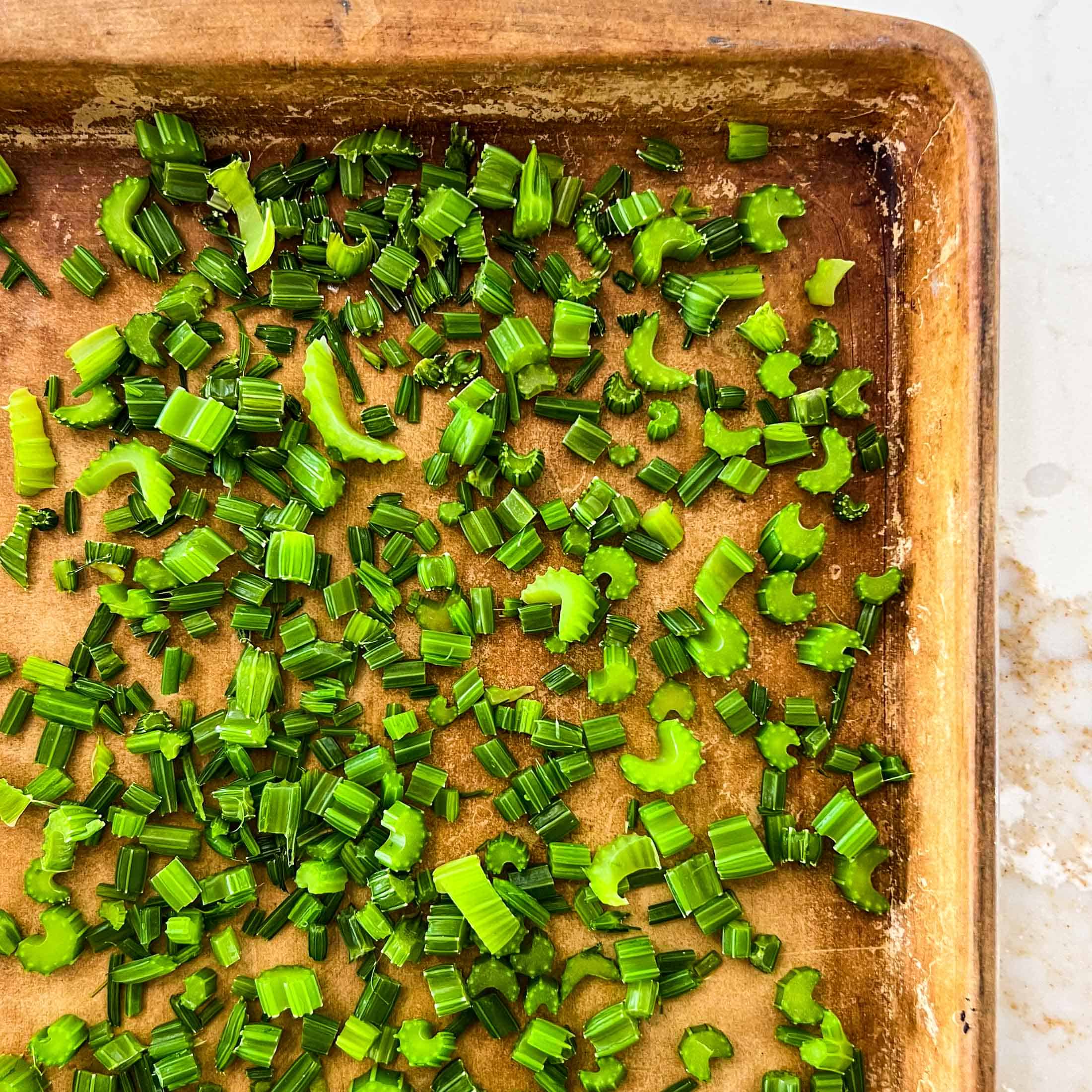
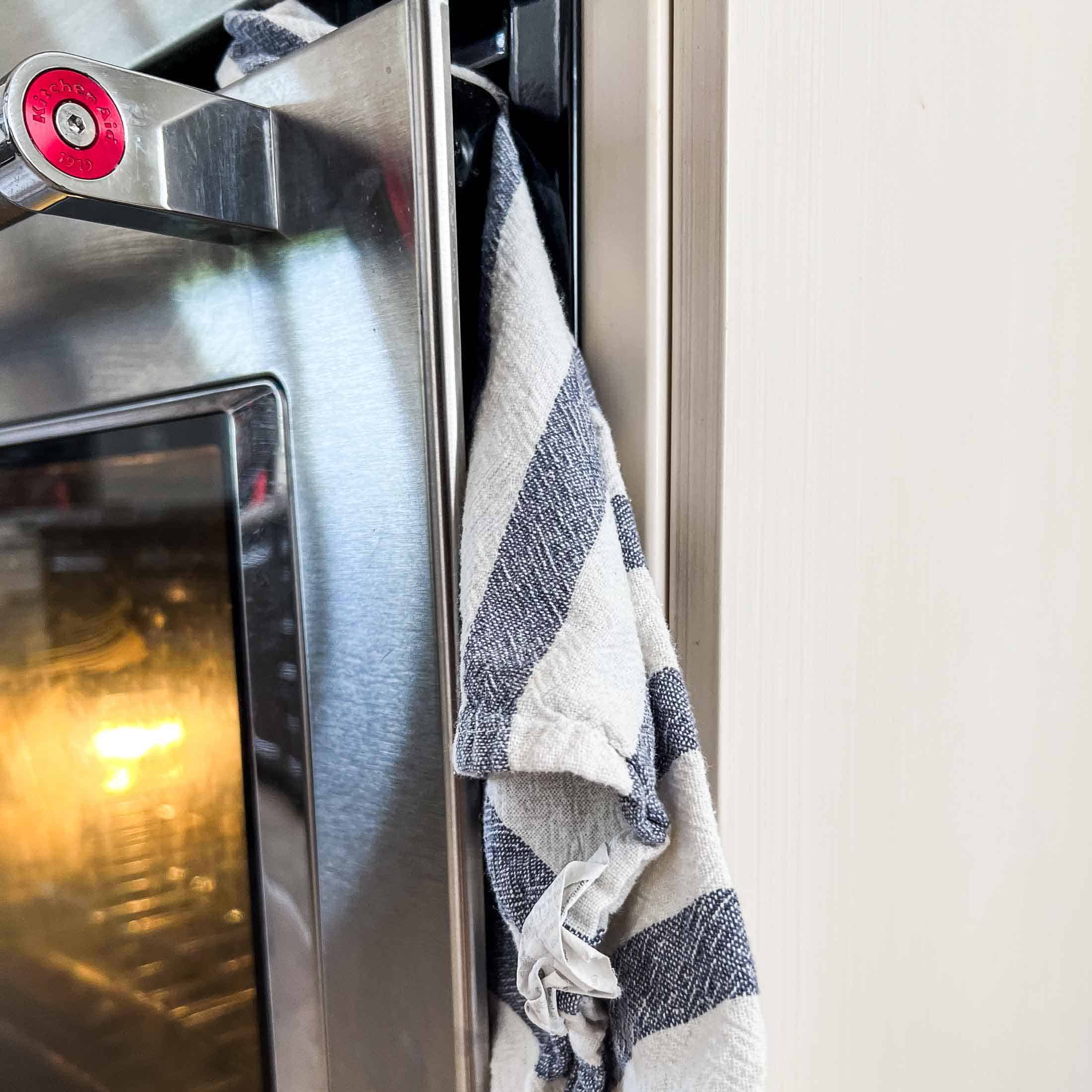
When done, celery should be very hard and brittle. Dried celery leaves should crumble and crush easily. Allow the dried celery to cool on the counter for 30 minutes. Cut into a few pieces to make sure that there is no moisture left in the middle of the celery pieces. At this point you should condition the celery (test for dryness) over 5 days. Place a handful of celery in an airtight container. Turn once a day for 5 days. After 5 days if you notice moisture, or mold, discard the celery. Check out this full guide to conditioning dehydrated fruits and vegetables for more information.
Step 4. Store + Use. Store dehydrated celery in an airtight container (I love mason jars). As always, dehydrated goods should be stored in a dark, cool place for best results. You may choose to throw in an oxygen absorber at this point to reduce oxygen in the jar and extend the shelf life of your dehydrated celery. This is not required but will help keep the celery fresh for longer. Celery leaves can be crushed into celery flakes or pulverized to make celery powder.

Dehydrating Celery in an Air Fryer
Using an air fryer to dehydrate celery is the fastest method out of the three; however, the drawback to using an air fryer is the limited space capacity.
Step 1. Trim + Rinse + Blanch.
Fill a large stock pot with water and turn it up to high heat so that it comes to a rolling boil. Separate the head of celery into individual stalks. Trim off the tops and bottoms of the stalks. Rinse in warm water (optional step, especially if you celery is garden fresh).
At this point you may choose to separate the celery leaves out or leave them on the stalks. If you plan to dehydrate the celery leaves for dehydrated celery flakes or to use independently from the stalks, separate them and skip the blanching.
Place the stalks of celery into the boiling water and set a 3 minute timer. Grab a large bowl and fill it with ice water. After the three minutes have passed, transfer the celery stalks to an ice bath with super cold water and leave for 2-3 minutes.



Step 2. Chop + Arrange. Chop the celery into 1/2 inch pieces. I use the large circular chop blade on my food processor to speed up the job. It is important that the celery is cut consistently to ensure that it all dehydrates at the same rate. Arrange in a single layer in your air fryer basket.



Step 3. Dry in the Air Fryer + Test for Dryness. Place the celery in your air fryer on the dehydrate setting or at 175°F and dry celery for 4-6 hours.
When done, celery should be very hard and brittle. Dried celery leaves should crumble and crush easily. Allow the dried celery to cool on the counter for 30 minutes. Cut into a few pieces to make sure that there is no moisture left in the middle of the celery pieces. At this point you should condition the celery (test for dryness) over 5 days. Place a handful of celery in an airtight container. Turn once a day for 5 days. After 5 days if you notice moisture, or mold, discard the celery. Check out this full guide to conditioning dehydrated fruits and vegetables for more information.

Step 4. Store + Use. Store dehydrated celery in an airtight container (I love mason jars). Another option for storing celery is using a vacuum sealer and special vacuum bags. You can use the vacuum seal attachment for mason jars to keep your celery fresher, longer. As always, dehydrated goods should be stored in a dark, cool place for best results. You may choose to throw in an oxygen absorber at this point to reduce oxygen in the jar and extend the shelf life of your dehydrated celery. This is not required but will help keep the celery fresh for longer. Celery leaves can be crushed into celery flakes or pulverized to make celery powder.
How to Rehydrate Celery
To rehydrate celery, simply soak it in a bowl of warm water for about 20-30 minutes until it becomes soft and plump again. Alternatively, you can add dehydrated celery directly to soups or stews and let them rehydrate as they cook. The texture of rehydrated celery will be similar to cooked celery, with a slightly softer texture than fresh celery. The rehydration process allows the celery to regain its moisture and nutrients, making it a great addition to any dish. It is important to note that rehydrated celery will have a slightly different texture than regular fresh cooked celery and is in no way a substitute for raw celery. that requires the flavor and crunch of fresh celery.
Batch + Storage
Batch: Generally, one cup of fresh celery is equivalent to two heaping tablespoons of dehydrated celery. 1 cup dried celery equals roughly 7-8 cups fresh celery.
Storage Recommendations: Store dehydrated celery in an airtight container (I love mason jars). As always, dehydrated goods should be stored in a dark, cool place for best results. You may choose to throw in an oxygen absorber at this point to reduce oxygen in the jar and extend the shelf life of your dehydrated celery. This is not required but will help keep the celery fresh for longer.
Printable Recipe For Dehydrating Celery
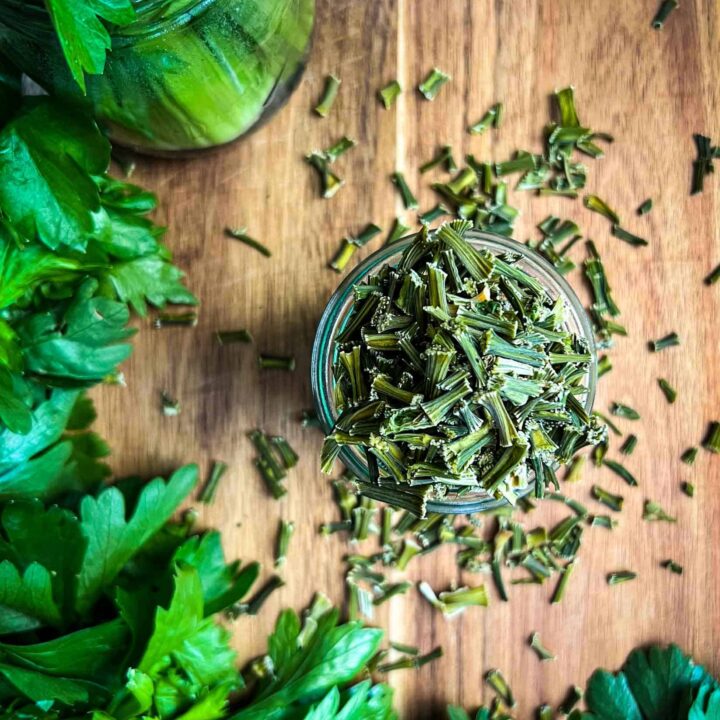
How To Dehydrate Celery | Drying Celery Leaves and Stalks
Read on to find out exactly how to dehydrate celery and learn preserve this kitchen staple when your harvest is abundant! Dehydrating celery stalks and leaves is simple and adds flavor and texture to soups, stews, and sauces. Drying celery helps to save freezer space for a long term storage solution that is simple to grab and use any time of the year.
Ingredients
- 1 Large Head of Celery (4 cups chopped)
Instructions
CELERY PREPARATION
- Trim + Rinse. Fill a large stock pot with water and turn it up to high heat so that it comes to a rolling boil. Separate the head of celery into individual stalks. Trim off the tops and bottoms of the stalks. Rinse in warm water (optional step, especially if you celery is garden fresh). At this point you may choose to separate the celery leaves out or leave them on the stalks. If you plan to dehydrate the celery leaves for dehydrated celery flakes or to use independently from the stalks, separate them and skip the blanching.
- Blanch. Place the stalks of celery into the boiling water and set a 3 minute timer. Grab a large bowl and fill it with ice water. After the three minutes have passed, transfer the celery stalks to an ice bath and leave for 2-3 minutes.
- Chop. Chop the celery into 1/2 inch pieces. I use the large circular chop blade on my food processor to speed up the job. It is important that the celery is cut consistently to ensure that it all dehydrates at the same rate.
DEHYDRATOR INSTRUCTIONS
- Arrange. Arrange the celery leaves and celery stalks in a single layer on your dehydrator tray.
- Dehydrate. Dehydrate celery stalks/leaves for 6-8 hours at 125°F. When done, celery should be very hard and brittle. Dried celery leaves should crumble and crush easily.
OVEN INSTRUCTIONS
- Arrange. Arrange in a single layer on a cookie sheet (baking tray) leaving space in between the pieces.
- Dry. Place the celery in your oven on the lowest setting (usually 150°F) and dry celery for 6-8 hours. Be sure to leave your oven door open slightly to allow moisture to escape. I use a dish towel to prop it open.
AIR FRYER INTRUCTIONS
- Arrange. Arrange in a single layer in your air fryer basket.
- Dry. Place the celery in your air fryer on the dehydrate setting or at 175°F and dry celery for 4-6 hours.
TEST/CONDITION
Cut into a few pieces to make sure that there is no moisture left in the middle of the celery pieces. Celery leaves can be crushed into celery flakes or pulverized to make celery powder. At this point you should condition the celery (test for dryness) over 5 days. Place a handful of celery in an airtight container. Turn once a day for 5 days. After 5 days if you notice moisture, or mold, discard the celery. Check out this full guide to conditioning dehydrated fruits and vegetables for more information.
STORE
Store dehydrated celery in an airtight container (I love mason jars). As always, dehydrated goods should be stored in a dark, cool place for best You may choose to throw in an oxygen absorber at this point to reduce oxygen in the jar and extend the shelf life of your dehydrated celery. This is not required but will help keep the celery fresh for longer.
REHYDRATE
To rehydrate celery, simply soak it in a bowl of warm water for about 20-30 minutes until it becomes soft and plump again. Alternatively, you can add dehydrated celery directly to soups or stews and let them rehydrate as they cook. The texture of rehydrated celery will be similar to cooked celery, with a slightly softer texture than fresh celery. The rehydration process allows the celery to regain its moisture and nutrients, making it a great addition to any dish. It is important to note that rehydrated celery will have a slightly different texture than regular fresh cooked celery and is in no way a substitute for raw celery.
Recommended Products
As an Amazon Associate and member of other affiliate programs, I earn from qualifying purchases.
Nutrition Information:
Yield: 8 Serving Size: 1 tablespoonAmount Per Serving: Calories: 1Total Fat: 0gSaturated Fat: 0gTrans Fat: 0gUnsaturated Fat: 0gCholesterol: 0mgSodium: 6mgCarbohydrates: 0gFiber: 0gSugar: 0gProtein: 0g
3 Delicious Recipe Ideas Using Dehydrated Celery
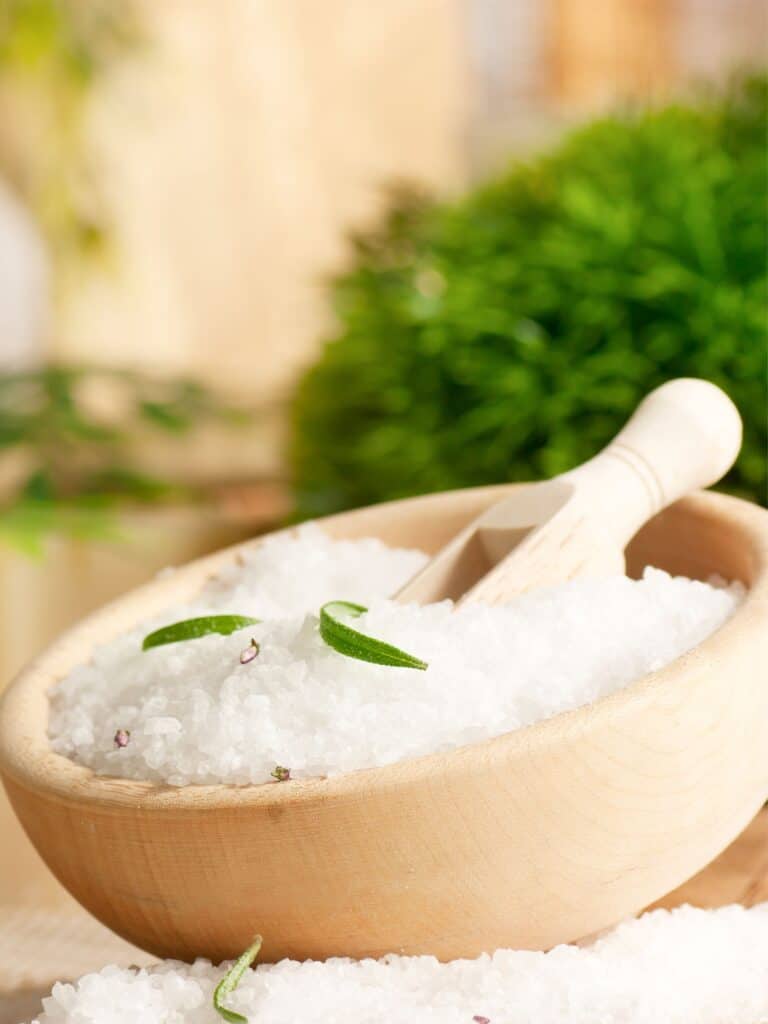
Celery Salt
Super easy with two ingredients, homemade celery salt is a must have in your spice arsenal!

Vegetable Soup
Throw some dehydrated celery into any homemade vegetable soup for a quick flavor booster!
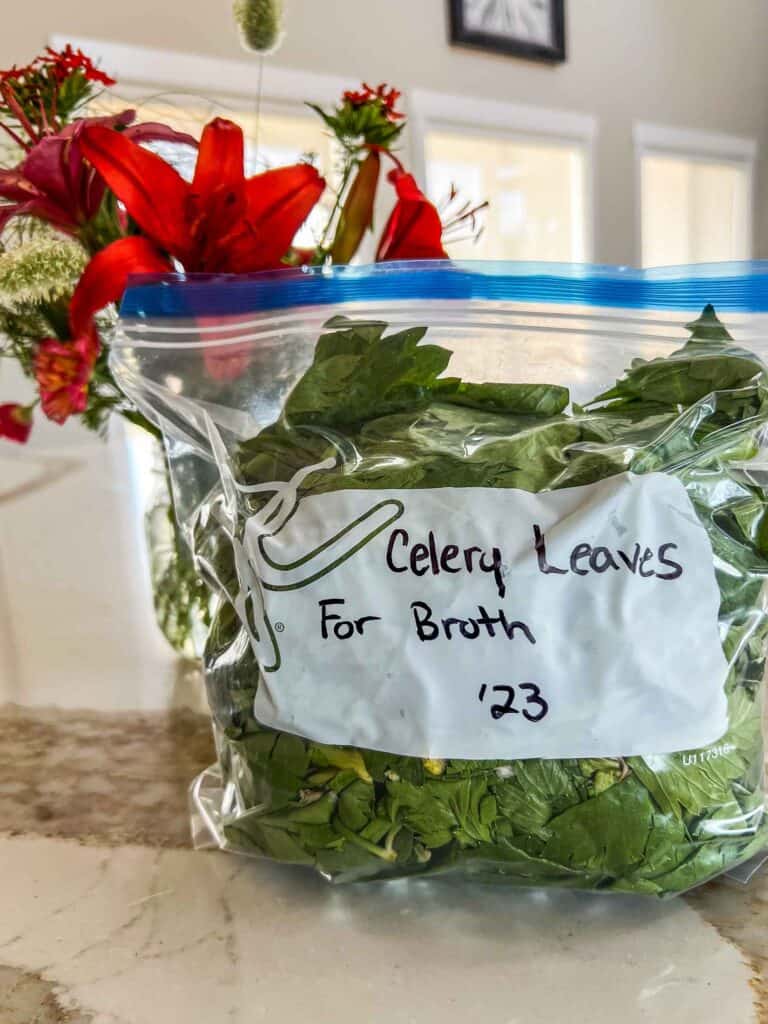
Stock
Use dehydrated celery in your chicken stock, vegetable stock, or beef stock.



